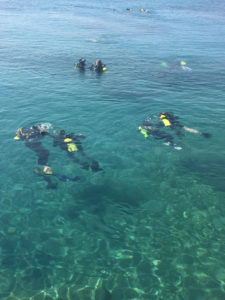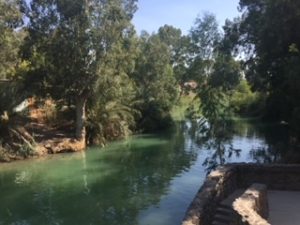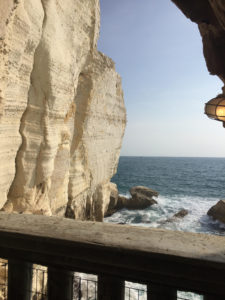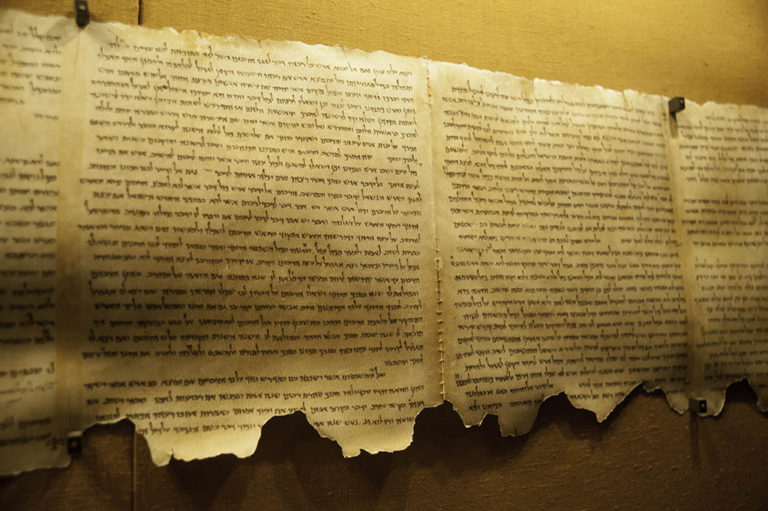Best Nature Reserves in Israel
The thing that makes Israel’s natural sites special is the unique elongated shape of the country which crosses several diverse climates and environments. In the north you may feel like you are in Europe but in the southern deserts you can feel how close you are to the continent of Africa.
The country’s many natural wonders have been protected and preserved in their original state; most are cared for by the National Nature and Parks Authority. There are 150 nature reserves in Israel, covering a wide range of natural wonders, from coral reefs in the Red Sea and desert oasis to stalactite caves and lush forests.
Visitors to Israel can take their pick of a wide range of natural sites, depending on their preference. Explore the hidden beauty of the desert or the waterfalls and forests of the Galilee; swim among tropical fish at Eilat’s coral reef or go underground to discover ancient dwellings. You’ll be surprised by the breathtaking natural wonder of Israel.
1. Ein Gedi

Ein Gedi is a tranquil oasis in the Judean Desert on the Dead Sea coast. Ein Gedi has been identified with a place mentioned in the Bible, in Chronicles 2, Genesis, Joshua, Ezekiel, Samuel 1 and in the Song of Songs. Today Ein Gedi includes a kibbutz, motel, archaeological site, botanical garden and the breathtaking Ein Gedi Nature Reserve.
Imagine the desert landscape with rocky hills, ravines and rough sandy plains cut through by natural springs, waterfalls and bright green vegetation. The nature reserve has two perennial streams, fed by natural springs (Nahal David and Nahal Arugot), plus the Ein Gedi Spring and the Shulamit Spring. The abundant water is used for agriculture, bottled water and the enjoyment of visitors to the nature reserve. The reserve is home to rich vegetation, many species of birds and desert animals, like the Nubian Ibex and Rock Hyrax. Visitors can walk along the paths, which follow Ein Gedi’s streams, and take you to the most picturesque waterfalls and natural pools. Along the way you can see these agile mountain goats, skillfully climbing the sheer cliff faces and be surrounding by the beautiful greenery. There are hike trails to suite all fitness levels from half an hour to a full day.
2. Red Sea Coral Reef

You don’t have to look hard to see the magnificent coral reefs of Eilat. As soon as you dive, snorkel or swim below the surface of the Red Sea, you will be met with the amazing site of naturally formed coral reefs and their inhabitants, thousands of tropical fish. The heart of Eilat’s coral reefs, is within the Coral Beach Nature Reserve, where there is a coral reef stretching 1,200 meters parallel to the beach. The reef is populated by butterfly fish, Julie fish, parrot fish; Achills tang fish, angel fish, clown fish and many more. This delicate ecosystem is protected by the authorities and although visitors are free to dive and swim among the reefs. The well being of the coral reefs is monitored, and when necessary, sections are closed off from visitors. Visitors can rent snorkel equipment at the Coral Beach Nature Reserve and explore the coral, underwater plants and marine live. Not far from here, along the Eilat coast are companies, which will take you on a diving excursion, even if you have never been diving before. There is also the Underwater Observatory Marine Park in Eilat, which includes aquariums and fish tanks, as well as an underwater observatory. Visitors enter the observatory and descend below sea level, to a room surrounded by windows looking onto the coral reefs. Kids love the park where they can enjoy a 3D movie about the coral reefs and its inhabitants, plus get up close to many marine animals. The park is involved in active conservation programs and coral repair programs. Visitors can also take a “submarine” trip or a cruise in a glass-bottom boat to see the coral reefs without getting wet.
3. Banias River

Banias or Hermon River, is a natural paradise at the foot of Mount Hermon, at the northern end of the Golan Heights; now protected as a nature reserve. The reserve centers on a spring, which runs through a richly vegetated gorge for 3.5km to a large waterfall. The stream goes on to become the Banias River and a source of the Jordan River. The area has an ancient history going as far back as the Romans, when Banias was the site of a shrine to the God Pan. Banias was even mentioned in the Bible as Caesarea Philippi, the name of the Roman town which once stood adjacent to the spring. The Hermon Stream (Banias) Nature Reserve encompasses archaeological remains from several ancient periods, including the Greco-Roman Grotto of Pan. The Banias Stream originates under the Grotto of Pan, from the Hermon Mountain then flows down towards the Jordan.
A hike trail runs through the dense vegetation of the reserve along the bank of the Banias Stream, to a magnificent waterfall. Visitors can choose from a longer trail to the waterfall, or a shorter circular route around the ancient city. The Banias Stream meets the Guveta Stream at the base of a Roman bridge, which was once part of the Roman road leading to Damascus. The flow of water where the two streams converge, created enough power to be turn flour mills. Visitors can walk among the ancient mills, and see the large mill wheels in the stream. While walking through the lush forest of the reserve, you will come across many small waterfalls and ancient ruins. The route through the reserve takes you through thick vegetation, under the shade of poplar trees, walnut trees, plane trees and passed a wide variety of bushes along the bank of the stream. The beauty of this rich vegetation and the idyllic stream, has led some to believe this may have been the Biblical Garden of Eden.
4. Sorek Stalactites Cave (Avshalom Cave)

One day in 1968 an explosion in the Hartuv quarry revealed a small opening which led into an underground stalactite cave. The cave is on the slope of Mt. Ye’ela in the Judean Hills; it is 91 meters long, 80 meters wide, 15 meters high and has an area of 4,800m². The hidden world within the cave concealed a magical world of naturally formed shapes. The slow dissolution of underground dolomite rock, creates fissures through which water rich with CO² seeps. The CO² is released and the limestone crystallizes over thousands of years, forming stalactites and stalagmites. Like a living organism the cave develops and changes over time. The air temperature in the cave is a constant 22°C and there is 95-100% humidity.
The cave is now preserved within the Avshalom Nature Reserve, and visitors can enter the cave following a raised path in among the strange formations. Within the cave is an advanced lighting system, which not only protects the stalactites from forming algae, but also highlights the various shapes and magical forms. The stalactites and stalagmites vary in size; some have joined to form natural pillars within the cave. Some of the stalactites are four meters long and date back 300,000 years. This is a unique and rare experience which can be enjoyed by the whole family.
5. Rosh HaNikra

If you travel to the extreme northwest of Israel, where Lebanon and Israel meet on the Mediterranean coast, you will find Rosh (head) HaNikra (grottoes). The Mediterranean Sea is a crystal clear turquoise color, and the waves crash up against stark white chalk cliffs, which hid a labyrinth of tunnels and caves. Over thousands of years the force of crashing waves against the cliffs has created openings into the rock, and formed caves. The caves branch off in several directions and in some places reach lengths of 200 meters.
In the past, access to the caves was only by sea but today, visitors are taken down to the caves via the steepest cable car in the world. There you can enter the sea grottoes, and walk along well maintained routes into the heart of the caves. The caves open up at intervals to reveal the sea, which gets its beautiful color from the reflection off the white rock. This natural phenomenon has to be seen to really understand the beauty of the site.
Once you have been through the caves, you can explore other attractions at this site which give you an insight into the history of Rosh HaNikra. During World War II a railway tunnel was blasted through the rock, and a railway bridge built for the Cairo-Istanbul Railway line. In 1948 the Jewish forces destroyed the railway bridge, to prevent arms entering Israel from Lebanon. The tunnel was never repaired, and this section of the railway was never dismantled. Visitors can see a short film about the history of Rosh HaNikra, see the historic railway tracks and get incredible views down the coast of Israel all the way to Haifa.




